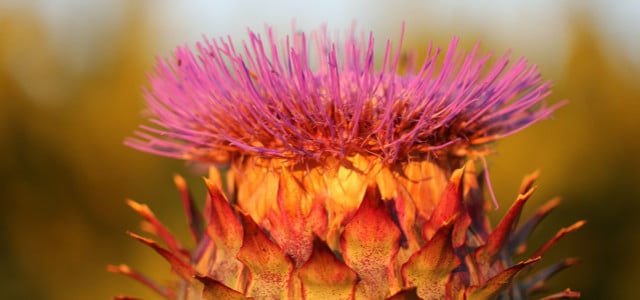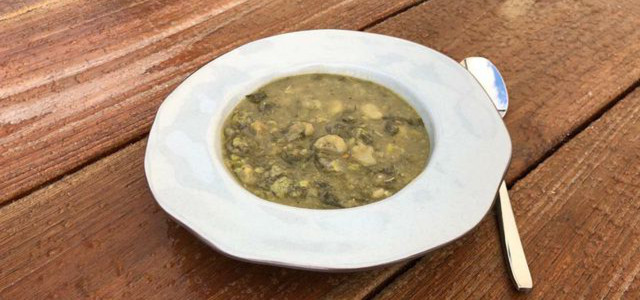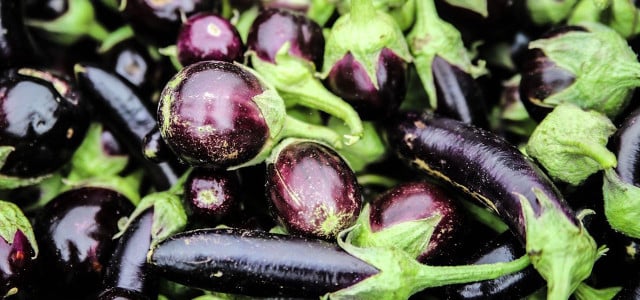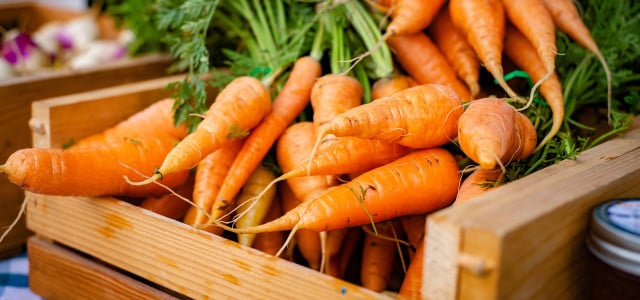Did you know that most vegetables flower? And that their flowers are actually bouquet-worthy, edible and bee-friendly?
Homegrown, fresh vegetables pose an array of nutritional benefits and can be a joy to grow and eat all year round. But vegetables can be enjoyed in more ways than one. Flowering vegetables produce plenty of beautiful, bright and in many cases edible flowers.
What are Flowering Vegetables?
Flowering vegetables produce flowers as well as food and they flower for different reasons. Some vegetables produce flowers to set and produce the vegetables whereas other flowering vegetables produce flowers when the plant has been left for too long and has begun to bolt.
One thing these flowering vegetables all have in common is their ability to produce both fresh, tasty and healthy vegetables, while simultaneously offering stunning ornamental displays to enjoy in your garden throughout the seasons.
Flowering vegetables can be planted in vegetable patches, or dispersed among foliage and flowers. By planting a diversity of these vegetables across your garden, you will also attract bees and insects, as well as ward off disease and pests. Make sure to check out those vegetables first which naturally grow in the US.
The benefits these flowering vegetables bring to your garden make it a no-brainer to start growing them. Here is a list of 10 flowering vegetables we recommend to try out:
1. Artichokes
Artichoke flowers, similar to thistles, are bright, bristly, and lavender blue. The flowers bloom from unharvested artichokes, so if you forget to pick a couple of your artichokes, don’t be too upset. They will fill your garden with stunning color and texture. Artichoke flowers also act as bee and insect magnets, so we really recommend them.
- USDA Zones: 6 to 11
- Height: Up to 4-feet tall
- Where and when to plant: Sandy and well-drained soil, with plenty of sun. Plant them after the last frost.
- Watering: 1-2 inches every week
- Nutritional content: High in vitamin C and fiber
Want to try something new? We recommend our spring vegetable and fava bean recipe. It’s fresh, healthy and super full of flavor.
2. Leeks
The delicate little white flowers from leek plants are beautiful and are loved by bees. They are edible and work well in salads.
- USDA Zones: 7 to 8
- Height: 2 to 3 feet
- Where and when to plant: Rich soil with strong drainage. Leeks also like full sun, so make sure they are well exposed in the garden. Spread 6 to 12 inches apart. Plant in spring or fall.
- Watering: 1 inch a week
- Nutritional content: High in vitamin C, B6, manganese and iron
Leeks work great in quiches, risottos and stews, but have you tried making your own homemade vegetable broth? No? Well we suggest trying it. Making your own fresh vegetable stock is very simple and much healthier for you. Plus, you can use your vegetable scraps, making it a zero-waste recipe.
3. Garlic
Garlic flowers are small, ranging from brilliant white in colour, to purple. They are edible, but wash them well. Insects love garlic flowers, so watch out for any unexpected visitors when adding these flowers to vegetable dishes or salads.
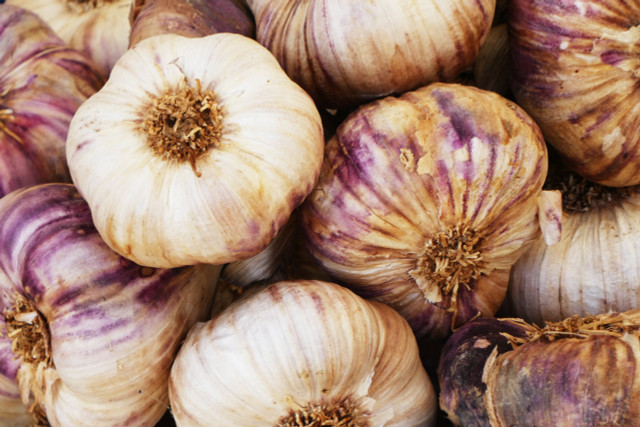
- USDA Zones: All
- Height: Water deep to the roots every week
- Where and when to plant: Well-drained soil, and in full sun. Plant in autumn
- Watering: 1 to 3 feet
- Nutritional content: Source of vitamin B6, vitamin C, manganese and selenium
It doesn’t need to be said that garlic is a staple in all cuisines and a favorite ingredient for any chef. So why not try something new, like fermenting this delicious vegetable? This adds another depth of garlicky flavor to your salads, sauces and marinades.
4. Green Onions
The tiny white blossoms of green onions bloom if left unharvested. They are edible, and tastiest raw, sprinkled over salads. Their flowers are also a favorite among bees and insects, so leave some stalks un-cut to bring these important bugs to your garden.
- USDA Zones: 6 to 9
- Height: 1 to 3 feet tall
- Where and when to plant: Sandy and well-drained soil, with plenty of exposure to the sun. Plant in early spring.
- Watering: 1 inch per week
- Nutritional content: High in vitamin C and B, good source of antioxidants and high in potassium and calcium
Green onions are native to Asia, and so work really well in Asian cooking. Best served raw as a garnish on your favorite Asian dish.
5. Swiss Chard
Daisy-like flowers appear on Swiss Chard when it is bolting. Bees are attracted to the flowers, and the real taste to swiss chard is in its leaves. So we recommend leaving the flowers to the bees, and enjoying the leafy greens instead.
- USDA Zones: 3 to 10
- Height: 18 to 24 inches tall
- Where and when to plant: Rich soil, with full to partial exposure. Plant in spring
- Watering: 1 to 1.5 inches per week
- Nutritional content: Excellent source of vitamin C, K and A. As well as potassium, iron and fiber
Just like it’s close cousin spinach, swiss chard works best when added to soups, pies, stews and pasta dishes.
Read on: Benefits of Green Juice: Is it Good For You?
6. Zucchini
These deep yellow blossoms are both beautiful to look at, and a delicacy in cooking. Many chefs have even admitted to planting zucchini plants purely for their flowers.
- USDA Zone: 3 to 9
- Height: Up to 10 feet tall
- Where and when to plant: Moist soil and full exposure to the sun. Plant in spring, and again in fall.
- Watering: Keep watering the soil so it remains moist
- Nutritional content: High in vitamins A, K, C and B6. It has also been known to lower blood sugar levels.
The beauty of zucchinis is their versatility. They are delicious roasted, fried, raw on salads, or made into zoodles and combined with asian flavors. Try out the traditional Greek recipe for Briam, and experience how tasty zucchinis can be.
7. Eggplant
These blossoms range in color from white, to a striking purple. But beware, these flowers are not edible!
- USDA Zones: 5 to 12
- Height: 2 to 4 feet
- Where and when to plant: Well-drained, moist and light soil, and lots of sun. Plant in late spring.
- Watering: 1 inch a week
- Nutritional content: High in antioxidants, including vitamins A and C, and a source of minerals such as magnesium, potassium and iron.
Eggplant parmesan is a classic, but what about trying chopping it up and adding it to curries. Or bake your eggplant and make homemade baba ganoush.
8. Turnips
Delicate yellow flowers appear on turnip plants as a result of bolting. Try them out as garnishes on salads or in soups.
- USDA Zone: 2 to 9
- Height: 12 to 18 inches tall
- Where and when to plant: Sandy soil with good drainage and partial exposure. Plant at the beginning of spring, then again at the end of summer
- Watering: 1 inch per week
- Nutritional content: They are loaded with fiber and vitamin K, as well as copper and iron.
Turnips are root vegetables, and so, like their potato cousins, are best served roasted, mashed or baked.
9. Carrots
Beautiful, tiny white flowers explode in a bowl-shape from small stalks on a carrot plant. These are edible and delicious in salads to add both flavor and visual delight. Even fried carrot flowers are considered a delicacy in many places.
- USDA Zones: 4 to 10
- Height: 6 to 12 inches
- Where and when to plant: Moist soil free of rocks, in a sunny spot. Plant in spring.
- Watering: 1 inch per week
- Nutritional content: Source of antioxidants, fiber, vitamin K1, potassium and beta-carotene.
Carrots offer endless culinary possibilities, from sweet carrot cakes, to stews and soups. Carrots can be slow roasted with maple and mustard for a sweet and smoky side dish, or pickled for a crunchy and fresh topping for salads and sandwiches.
10. Sweet Potatoes
Sweet potato flowers are very similar to morning glories in appearance. Dainty little white cups with purple stripes, these beautiful flowers attract both humans and bees alike. However, they are not edible. So best to appreciate them from afar and leave them for the bees to enjoy.
- USDA Zone: 8 to 12
- Height: 4 to 6 inches
- Where and when to plant: Warm, well-drained soil that is not too fertile. Plant them 3 to 4 weeks after the last spring frost.
- Watering: 1 inch a week
- Nutritional content: Above all, sweet potatoes are a super source of fiber. They also provide most vitamin Bs and vitamin C, calcium, selenium and iron.
These sweet root vegetables are best fried, baked or mashed. Alternatively, they work amazingly as vegan burgers.
** Links to retailers marked with ** or underlined orange are partially partner links: If you buy here, you actively support Utopia.org, because we will receive a small part of the sales proceeds. More info.Do you like this post?






